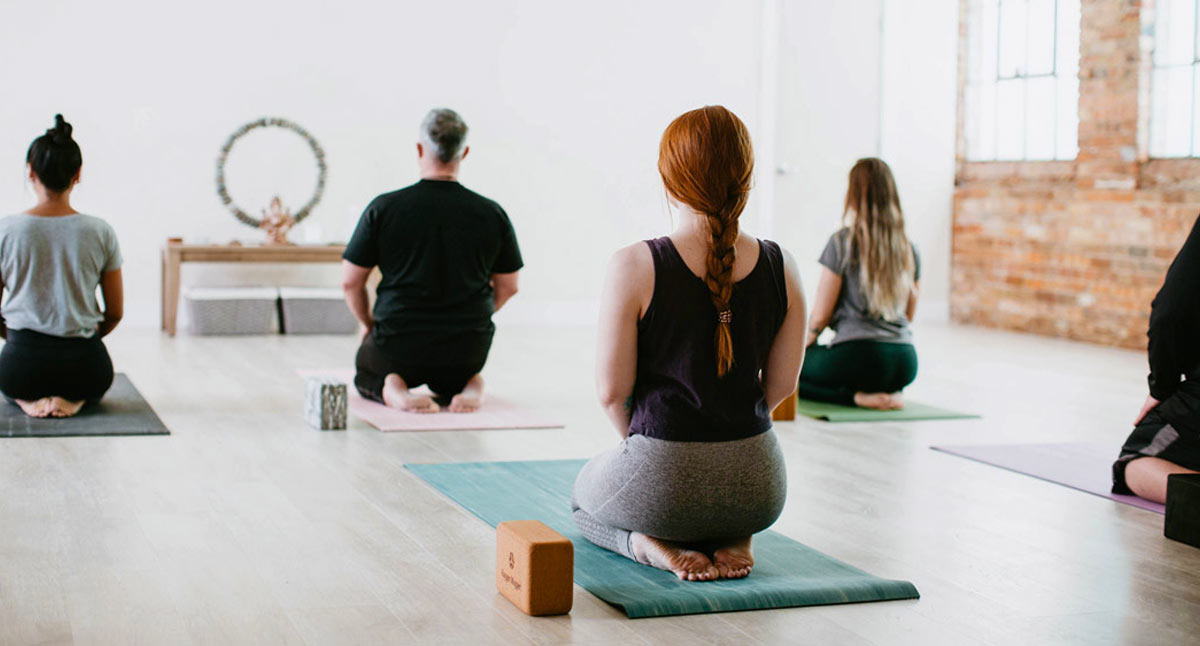This entry was published on March 5, 2025 by Charlotte Bell.

What is yoga? Good question. And you will probably not get a concrete response. When a philosophy has existed for as long as yoga, perhaps 5,000 to 6,000 years (even this is questionable), the definition of yoga is likely to be delicate.
The most popular yoga in the West, Hatha Yoga, is one of the five – or six – branches, depending on which you are talking about. Each branch represents an aspect of human life. While many practitioners concentrate most of their energies on a single branch, there is also overlapping. For example, practice raja Yoga (meditation) can make us more conscientious about our actions (karma yoga). In the same way, hatha yoga or bhakti Yoga (devotion) can make Raja Yoga more accessible. And so on.
You will find below very brief synopsis of the branches of yoga. Each branch could be an area for a study committed for life, so these few sentences that I offer do not do them justice. I encourage you to explore these branches for yourself.
5 branches of yoga
- Hatha Yoga: This is the branch that most western practitioners know. Hatha Yoga is the practice of physical postures combined with respiratory practices. The intention is to harmonize the nervous system in order to create the conditions for the mind to settle. In the following articles, I will dive more deeply.
- Bhakti Yoga: This branch is most often associated with devotion, the ability to see the divine throughout creation. It’s heart yoga. In terms of elementary, it is also the practice of channeling our emotions at the service of something bigger than ourselves. Song – Alone (bhajan) or in community (kirtan) – is fundamental for Bhakti yoga, as a way to transcend the ego.
- Raja Yoga: Raja Yoga is mainly interested in taming the mind. Meditation, observation of the mind and the discovery of its nature, is its fundamental practice. The intention is to win the liberation by seeing the illusory nature of our “mental stuff” so that we can win the illusion and to live in the vast conscience.
- Jnana Yoga: This is the path of study and self-inquiries. In the same way that Bhakti Yoga is Yoga of the Heart, Jnana Yoga is Yoga of the mind. It is sometimes considered the most difficult path because it requires years of intensive study. Jnana yoga is generally appreciated by the most intellectually inclined.
- Karma Yoga: Karma means “action”. But it’s only half of the karma. The other, just as important, half is intention. Karma Yoga recognizes the importance of harmonizing our actions with our intentions: the integrity of the AKA. Karma Yoga also recognizes that all of our actions have consequences. The altruistic service is one of the cornerstone practices of Karma Yoga.
More in -depth exploration in the definition of yoga
Again, I encourage you to look further in each of these branches, how they meet and how they could play in your own life. These small descriptions are not about to summarize the depth and extent of these life practices.
If you want to dive very deeply to learn the tradition of yoga and define yoga, read yoga: the immortality and freedom of Mircea Eliade. It is not a light reading, but it provides an in -depth history of the roots of yoga and its many branches.
This post is part of our Yoga 101 series, which will give an overview of the bases of philosophy and the practice of yoga. Here is another article defining yoga from the point of view of Sutras yoga of Patanjali.
About Charlotte Bell
Charlotte Bell discovered yoga in 1982 and started teaching in 1986. Charlotte is the author of Mindful Yoga, Mindful Life: A Guide for Everyding Practice and Yoga for Meditators, both published by Rodmell Press. His third book is entitled Hip-Healthy Asana: The Yoga Pratitioner’s Guide to Protect of the Hips and Avoid Si Joint Pain (Shambhala Publications). She writes a monthly chronicle for Catalyst Magazine and is online Yoga U publisher. Charlotte is a founding member of the board of directors of Greentree Yoga, a non -profit organization that brings yoga to poorly served populations. Musician for life, Charlotte plays an oboe and an English horn in the Salt Lake Symphony and the Sextuant Folk Red rock Rondo, whose DVD won two Emmy Awards.
